Figuring out Lincoln Wright’s weathering technique is a chase that can leave you exhausted.
I’ve watched many very good modelers over the years, analyzing the tools, products, and techniques they use in finishing their work. It’s really helped me grow my own ability.
But one thing that generally characterizes all of them is a particular set of tools and methods. While it’s not as though they are automatons, the thing they are known for is generally the thing they stick with. I can come up with a “playlist” for them, and just like a coach calling out plays, pick one and run with it.
Lincoln Wright breaks that mold. He’s definitely “run and gun”, as my high school basketball coach would say.
A Target Rich Environment
It’s not that his method is haphazard or chaotic. Far from it, in fact. He seems to get a vision of how he wants something to look, and gets there precisely, whatever route he takes. No matter what he throws at it, or in what order, it’s all quite assuredly his work. Recognizable and distinct. Yet the way he gets there isn’t a rote, step-by-step method.
I guess the best way to illustrate what is at the core of his technique is a brief snippet from one of his videos. I can’t recall which one it was – a weeklong session of binge watching is sort of a blur 🙂 , but he was discussing a conversation with Kow Yokoyama, creator of the Maschinen Krieger property. Linc worked for him for many years, and thus was able to truly call him “sensei” – he learned from the source how to execute the Ma. K style.
I may be paraphrasing this a bit, but Linc recounted that Yokoyama-san said something to the effect of “Just make it look cool”. I think that if you’re looking for the “key” to Wright’s method, you have to start there. The journey may vary, but just as a pilot always keeps eyes on the target despite maneuvering, Linc does the same. Stay on target Red Five. 😀
Happy Little Trees
Another aspect to his work is the serendipitous nature of it. Several times throughout his videos, Linc will take what may be an unexpected occurrence, turn it into “a thing”, and just like that, it still has his distinct look. It’s the Ma. K version of Bob Ross’ “happy accidents”.
This really resonated with me as I critically considered his work. Often modelers will make a mistake, and spend time trying to correct it, to reverse whatever happened and try to “get back on track”. Yet here again is where another aspect of Wright’s style pops up.
Linc is a very efficient modeler. There’s little in his process that is “single use”. A step may seem like a thing unto itself, but close examination reveals that it accomplished two or three results. An accident is seen as an opportunity. An unplanned product behavior is immediately exploited to benefit the final result. A bit applied here results in three things in the end.
I think the biggest takeaway in trying to nail down his style is the notion that in any build, all the tools are on the table. The mantra of “just make it look cool” is the current that runs under the stream, driving it forward, getting it to the ultimate destination. While he may focus on this style or that style for a particular build, the end goal never suffers from a lack of willingness to try something new and different to achieve the end purpose.
Getting Down to Business
With all this in mind, I had to try and come up with a way to demonstrate some lessons that can be extracted. I didn’t really feel it was possible to duplicate his process, but rather that I had to latch on to the thought “just make it look cool”, and then apply things in a similar fashion as he demonstrates. Even then, I feel it at best achieves a “Linc-esque” result. It’s not replication, but at best an “homage”.
In Part 1 of this profile, I discussed getting the model painted and assembled. The starting point for this article was a painted and decaled model. I tried to make sure that all of the techniques I examined were drawn from Linc’s public videos. He’s helpfully compiled a Maschinen Krieger specific playlist on his Paint on Plastic Youtube channel. He also has many Ma.K videos available for supporters on his Patreon channel.
Let’s Get Physical
I wanted to start by adding chips and scratches to the model. And if there is a method for acheiving that, Linc has probably tried it. All would likely be familiar to most modelers. However, I feel like two methods are worth noting.
Over the years, I have seen modelers here and there who use hobby knives and other tools to physically scrape paint from their model. I’ve tried it a few times myself, though admittedly with mixed results. (“Mixed results” is code for “I stunk at it.” 😉 ) Linc doesn’t just do this well… he’s made it a feature of his work.
Following the demonstrations in his videos, I used both my hobby knife and a file. While I’d watched the method before, I realized that in my own efforts I’d been very imprecise. Scraping paint a layer at a time is a delicate operation. The use of lacquers really stood out in this process.
Under The Blade
When I’d tried to physically scrape paint with a knife blade before, it had been over acrylic paint. While modern acrylics are fairly durable, they don’t come close to the strength that lacquers bring to the table. As I began to carefully scrape away paint, the lacquer durability actually helped. I could not scrape away too much too fast, as long as I used a light touch. It gave incredible control, to not only scrape things down the the under layer, but also to simply thin a layer, allowing just a hint of the undercoat to show.
Of course, it can be overdone fairly easily. In a few areas, especially early on as I tried to get a good feel for it, I went down to the underlying texture coat (which was in gray). Correcting it is simple enough – a dot of dark brown to match the mahogany primer tidied it up.
I also tried using my Citadel seam scraper, and that worked wonderfully. Because it’s not as sharp as a hobby knife. I was able to be a bit more controlled. It was better for edges and larger areas, but I’ll definitely make use of that particular tool again.
More Than A Filing
Another method Linc demonstrates is to use a file to create scrapes. As with the knife, it requires good control and careful application. However, because it is much “gentler” than the edged “weapons”, I felt it could produce much more interesting chips.
When applied over the suit’s textured surface, the combination of the files flat surface against the “lumps” of the texture was gold. In a few places on the red paint, I was able to produce smaller spots of wear that clearly showed a small outer circle of the white color, but also a smaller inner area down to the dark primer.
The file also does a great job of making actual scrapes. So often it can be difficult to reproduce scrapes, as there is not only a degree of paint damage, but it is confined enough to show a physical “divot”. While two color chipping can emulate this, nothing does it quite like a file’s edge.
Chip Me With Your Best Shot
I did add in another new thing for me – drybrush chipping with lacquers. While I’ve used dry brushing with acrylics to add a sort of chipping/edge highlighting combo, Linc had discussed the use of lacquers for this at some point, and using a high contrast color on white.
I used AK Interactive’s German Gray, and at first went very light. However, as I added more, I really liked the effect, and attacked a few areas more heavily. In other places, emulating Linc’s videos, I used the edge of the flat brush to add more scrapes and longer chips.
Because the paint dries quickly, there’s not a lot of “loiter time”. But that fact also produces its own effect. As the chips dry, the action of the brush, and the sticky paint on its surface, can actually chip the chips, pulling up random patterns within the patterns.
Genius.
More Weathering
A few of the steps were very familiar. An enamel panel line wash was applied to help the engraved panel lines stand out a bit more. Here again though, I followed Linc’s lead, and instead of doing the cleanup with a cotton bud as I usually do, use a brush damped with thinner. This helped remove the excess, but it also left behind some stain. Clearly it showed the efficiency of his method. Some areas showed as grimy, others as chipped, others as stained. The cleanup process, while generally subtractive, was still oddly additive in nature.
On the feet, I followed more along the lines of one video’s look at heavier panel lining. Rather than make use of more thinned oils/enamels, Linc demonstrated using a much heavier placement of oils on a panel line or area of shadow. Again using a brush damped with thinner, he began cleaning. In this case, much more of the media was left behind, which created very heavy panel lining, and to my eye a wonderful, grimy effect.
The oils of course allow for a great range of blending, so the look can be customized to dial in exactly the look the modeler wants. And once again, the efficiency of the technique showed, as it not only created weathering, it also “tinted” chipped areas, helping them stand out even amid the grime.
Heading To A Conclusion
Eventually I realized Linc’s toolbox of techniques exceeded what any single model could take, and how much time I had to devote to it. The model was already at a point I liked, so I added a few final touches.
Fluid stains were added to the termination points of the hoses that connect the torso to the legs. These are done with acrylics – products Linc used in his video for the Night Ops armored suit. In the “rear drain” on the back of the model, I combined pigments and oils, which gives a nice grimy but slightly textured look.
I set the suit aside overnight, following my “let the eyeballs rest” rule. The next day, I made a few adjustments, applying spot applications of the various techniques outlined above. (And maybe a couple more too… 🙂 ) With the pilot’s head added, I applied a matte varnish coat, and the Space Prowler was declared finished.
Shaking My Head
I know this is starting to sound like a gushy fan club article, but after spending several weeks studying Lincoln Wright’s methods and techniques, and attempting to apply them to the model, I’m left shaking my head. While I can replicate most of what he demonstrates in video, I realized there is a missing element.
In any artistic endeavor, there is a line between knowing how to do something, and having the God-given talent to know when to add it – or not. Linc clearly has that sense.
Take chipping for example. I see edges, that’s where the chipping goes. If I want it heavy, I do more chips; lighter, I do fewer. He sees edges, he picks one or two places, puts the chips there, and it’s done. It’s not so much heavy or light, it’s simply correct. The features of the area are enhanced, and the viewer may “feel” density and volume that are imparted by placement, color, and the use of space. It’s a weird thing to describe, really.
But that sense of true artistry is why Linc is so good at what he does. And on top of that, he’s humble enough, and still has enough awe of the process, to share in the fun he gets from the journey.

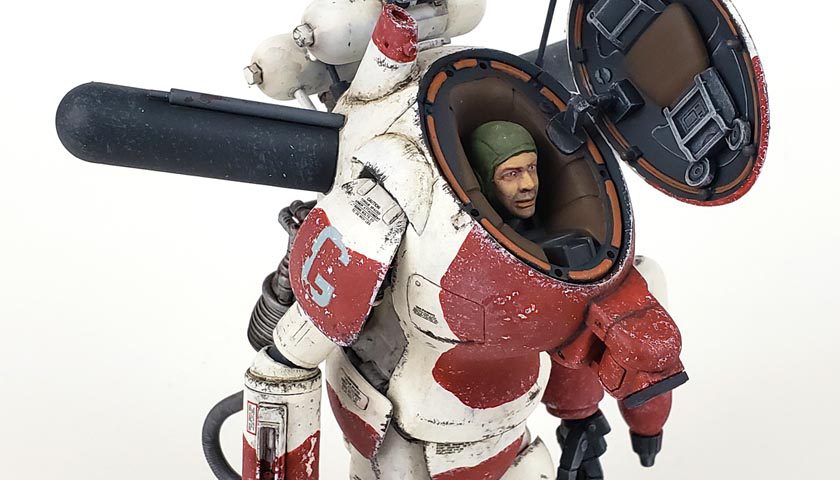
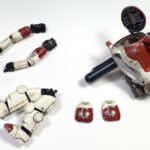
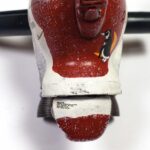
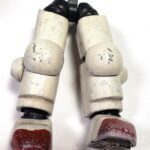
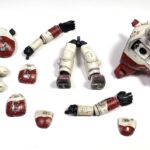
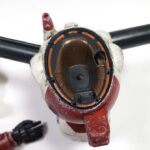
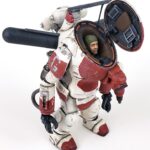
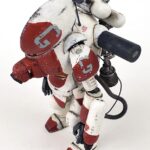
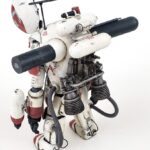
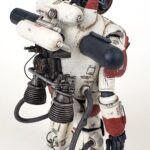
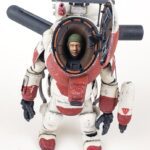
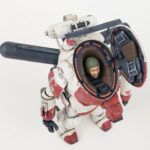
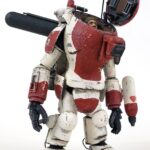

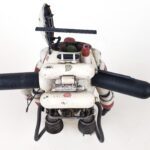
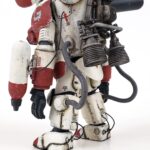
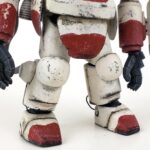
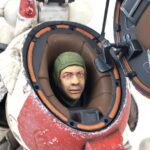
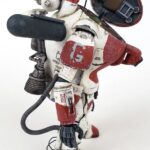
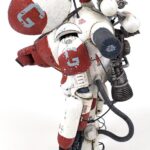
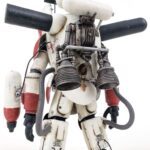
Leave a Reply